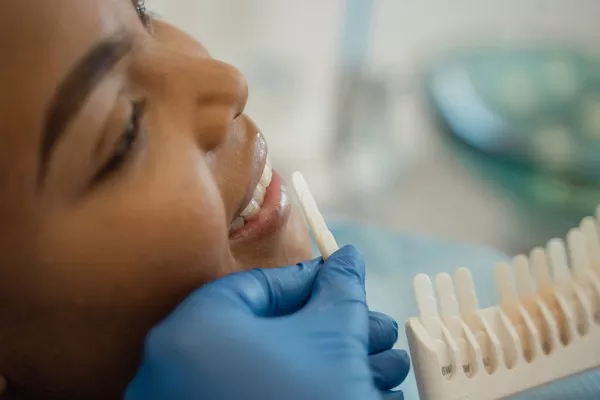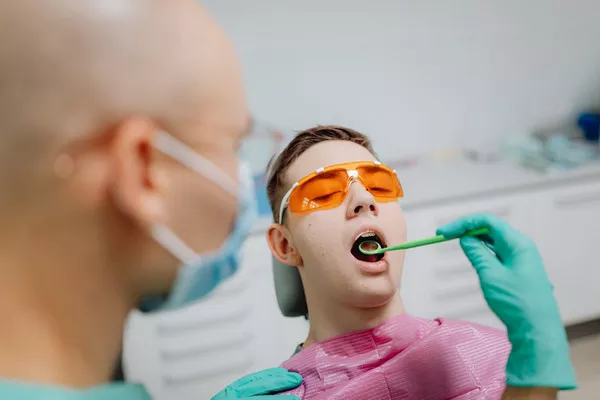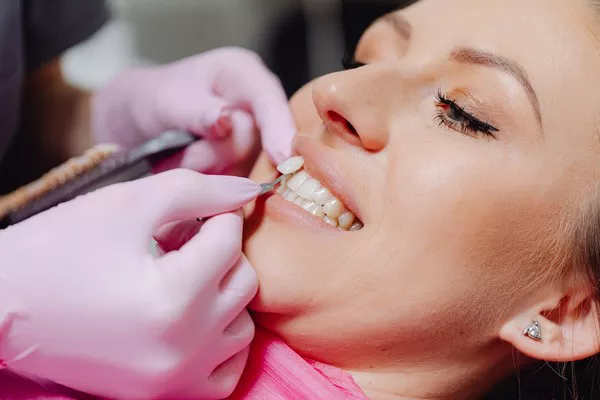Maintaining a bright, healthy smile is a priority for many individuals. Teeth cleaning and whitening are two key dental procedures that contribute significantly to oral health and aesthetics. This comprehensive guide explores the importance, types, costs, benefits, and other essential aspects of teeth cleaning and whitening.
Overview of Teeth Cleaning and Whitening
Teeth cleaning and whitening play crucial roles in maintaining not only the health of your teeth and gums but also the appearance of your smile. Regular teeth cleaning, typically performed by dental hygienists, involves the removal of plaque, tartar, and stains from the teeth. This procedure helps prevent cavities, gum disease, and other oral health issues.
Whitening treatments, on the other hand, focus on enhancing the visual appeal of your teeth by removing or reducing discoloration. These treatments can address stains caused by factors such as aging, smoking, and consumption of certain foods and beverages.
Importance of These Procedures
Oral Health: Routine teeth cleanings help to prevent gum disease, cavities, and other dental problems by removing the buildup of plaque and tartar that regular brushing and flossing might miss. This is crucial for maintaining healthy gums and preventing tooth decay.
Aesthetics: A bright, white smile is often associated with good health and youthfulness. Teeth whitening can significantly improve your appearance and boost your confidence. It can be especially beneficial for those who have noticeable stains or discoloration.
Overall Well-being: Good oral hygiene is linked to overall health. Poor oral health has been associated with various systemic conditions such as heart disease and diabetes. Thus, regular cleanings and maintaining a bright smile can contribute to better overall health.
Types of Procedures Available
There are several teeth whitening options available, each with its own advantages and considerations. Here we discuss professional in-office treatments, take-home kits prescribed by dental professionals, and over-the-counter products.
Professional In-Office Whitening Treatments
Laser Whitening: This method involves applying a whitening gel to your teeth and then using a laser to enhance the whitening effect. The procedure is quick, often taking about an hour, and can yield immediate results. It’s known for its effectiveness in achieving several shades of whitening in just one session.
Zoom Whitening: Another popular in-office treatment, Zoom whitening uses a hydrogen peroxide-based gel and a special light to accelerate the whitening process. The treatment typically lasts around an hour, with noticeable results right after the procedure. It is highly effective for significant discoloration.
Take-Home Whitening Kits Prescribed by Dental Professionals
These kits are provided by dentists and are custom-made to fit your teeth. They usually include a whitening gel and custom-fitted trays. The patient applies the gel to the trays and wears them for a specified period, usually a few hours each day or overnight, for about two weeks. This method offers the convenience of home use with the guidance and safety of professional supervision.
Over-the-Counter Whitening Products
Over-the-counter (OTC) whitening products are readily available and include options such as whitening strips, gels, toothpaste, and rinses. These products are generally less expensive than professional treatments and can be used at home. However, they may not be as effective and can take longer to show results.
Average Costs
The cost of teeth cleaning and whitening can vary widely depending on the type of treatment and other factors. Here is a breakdown of the typical costs associated with each option.
Professional In-Office Treatments
The cost for professional in-office whitening treatments can range significantly:
Laser Whitening: Typically costs between $600 and $1,800 per session. The high end of the range reflects treatments in metropolitan areas or by highly experienced dentists.
Zoom Whitening: Usually falls between $300 and $1,000 per session. The exact price depends on the geographic location and the dentist’s expertise.
Take-Home Whitening Kits Prescribed by Dental Professionals
These kits generally cost between $200 and $400. The price includes the custom-fitted trays and the whitening gel. Although the initial cost might seem high compared to OTC products, these kits often provide better results and are safer for your teeth.
Over-the-Counter Whitening Products
OTC whitening products are the most affordable option:
Whitening Strips: Typically cost between $20 and $50 for a two-week supply.
Whitening Toothpaste: Usually priced between $3 and $15 per tube.
Whitening Gels and Trays: Can cost between $30 and $100.
Whitening Rinses: Generally cost between $5 and $15 per bottle.
Factors Influencing Cost
Several factors can influence the cost of teeth whitening procedures:
Location of the Dental Clinic
The cost of dental services can vary based on the geographic location. Clinics in metropolitan areas or regions with a higher cost of living tend to charge more for whitening treatments.
The Specific Whitening Procedure Chosen
Different whitening methods come with different price tags. For instance, laser whitening is generally more expensive than Zoom whitening or take-home kits due to the technology and time involved.
The Dentist’s Experience and Reputation
Highly experienced and reputable dentists often charge more for their services. While it might be tempting to opt for a cheaper option, it’s essential to ensure the dentist has the necessary qualifications and experience to perform the procedure safely and effectively.
see also: How Often Should Deep Cleaning Be Done?
Benefits of Each Procedure
Each whitening method offers unique benefits. Here, we discuss the effectiveness, duration of results, and potential risks or side effects associated with each.
Professional In-Office Treatments
Effectiveness: These treatments are typically the most effective, providing noticeable results in just one session. They can lighten teeth by several shades.
Duration of Results: The results from professional treatments can last between one to three years, depending on your oral hygiene habits and lifestyle choices.
Risks and Side Effects: Potential side effects include temporary tooth sensitivity and gum irritation. However, these are usually mild and short-lived. Professional supervision minimizes the risk of adverse effects.
Take-Home Whitening Kits Prescribed by Dental Professionals
Effectiveness: These kits are effective, though results may take a bit longer to achieve compared to in-office treatments. They can also provide several shades of whitening over a few weeks.
Duration of Results: The results can last from six months to two years, with proper care and maintenance.
Risks and Side Effects: Similar to in-office treatments, side effects may include temporary sensitivity and gum irritation. Custom-fitted trays help to reduce these risks.
Over-the-Counter Whitening Products
Effectiveness: OTC products are generally less effective and may only lighten teeth by one or two shades. They require consistent use over a longer period to see noticeable results.
Duration of Results: The results are usually short-lived, lasting a few months at most. Frequent touch-ups are necessary to maintain the desired shade.
Risks and Side Effects: There is a higher risk of tooth sensitivity and gum irritation due to the lack of professional supervision and less precise application methods.
Preparation and Aftercare
Proper preparation and aftercare are crucial for achieving the best results from teeth whitening treatments and minimizing any potential side effects.
Preparation
Dental Examination: Before undergoing any whitening treatment, it’s essential to have a dental examination to ensure your teeth and gums are healthy. This helps to identify any issues that might need to be addressed before whitening.
Cleaning: A professional teeth cleaning is recommended before whitening to remove any plaque and tartar, which can hinder the effectiveness of the whitening treatment.
Avoid Staining Foods and Beverages: In the days leading up to your whitening treatment, avoid foods and drinks that can stain your teeth, such as coffee, tea, red wine, and dark-colored fruits.
Aftercare
Avoid Staining Substances: For at least 48 hours after whitening, avoid foods and drinks that can stain your teeth. This includes coffee, tea, red wine, berries, and tobacco products.
Maintain Oral Hygiene: Brush your teeth at least twice a day and floss daily to maintain the results of your whitening treatment. Using a whitening toothpaste can help prolong the effects.
Use a Straw: When drinking beverages that could stain your teeth, use a straw to minimize contact with your teeth.
Touch-Up Treatments: Depending on the whitening method used, you may need occasional touch-up treatments to maintain the brightness of your smile. Discuss the frequency and type of touch-ups with your dentist.
Manage Sensitivity: If you experience sensitivity after whitening, use toothpaste designed for sensitive teeth and avoid very hot or cold foods and drinks.
see also: How Long Do Whitening Strips Keep Your Teeth White?
Insurance and Financing Options
Understanding the financial aspects of teeth whitening can help you make an informed decision. Here’s what you need to know about insurance coverage and financing options.
Dental Insurance
Most dental insurance plans do not cover the cost of teeth whitening, as it is considered a cosmetic procedure. However, it’s always a good idea to check with your insurance provider to confirm the details of your coverage.
Financing and Payment Plans
Many dental clinics offer financing options or payment plans to make teeth whitening more affordable. Here are some common options:
In-House Payment Plans: Some dental offices provide payment plans that allow you to pay for the whitening treatment in installments.
Third-Party Financing: Companies like CareCredit offer healthcare credit cards that can be used to finance dental treatments, including whitening.
Discount Plans: Dental discount plans are another option. These are not insurance but provide discounts on various dental procedures, including whitening.
Health Savings Accounts (HSAs) and Flexible Spending Accounts (FSAs): If you have an HSA or FSA, you might be able to use these funds to pay for teeth whitening, as these accounts cover a range of medical and dental expenses.
Conclusion
Teeth cleaning and whitening are essential procedures for maintaining oral health and achieving a bright, attractive smile. With various options available, from professional in-office treatments to take-home kits and over-the-counter products, there is a solution for every budget and preference. Understanding the costs, benefits, and proper care associated with each method will help you make an informed decision and enjoy the best possible results. Whether you opt for a professional service or a DIY approach, the investment in your smile is sure to pay off in confidence and overall well-being.
FAQs About Teeth Cleaning and Whitening
1. How much is teeth cleaning in Hong Kong?
The cost of teeth cleaning in Hong Kong can vary depending on the dental clinic and the specific services included. On average, a standard teeth cleaning session can range from HKD 500 to HKD 1,500. It’s recommended to check with your chosen dental clinic for precise pricing and any available packages or discounts. Some clinics may also offer comprehensive dental check-ups that include cleaning as part of the service.
2. Is it worth it to get your teeth professionally whitened?
Yes, getting your teeth professionally whitened is generally worth it if you desire noticeable and lasting results. Professional whitening treatments are more effective and safer compared to over-the-counter products. Dentists use higher-concentration whitening agents and customize the treatment to suit your teeth’s condition, ensuring optimal results with minimal risk of sensitivity or damage. Professional whitening can significantly enhance your smile and boost your confidence.
3. Why is teeth whitening so expensive?
Teeth whitening can be expensive due to several factors:
Professional Expertise: The procedure is performed by trained dental professionals who ensure the treatment is safe and effective.
High-Quality Materials: Dentists use high-concentration whitening agents and advanced technology that deliver better results compared to over-the-counter products.
Customized Treatment: Professional whitening is tailored to each patient’s needs, which involves time and precision to achieve the desired outcome.
Clinic Overheads: The cost includes the operational expenses of running a dental clinic, such as staff, equipment, and facility maintenance.
4. How long does teeth whitening last?
The duration of teeth whitening results can vary based on several factors, including your oral hygiene habits, diet, and lifestyle. Typically, professional teeth whitening can last from six months to two years. To prolong the effects of whitening, it is advisable to maintain good oral hygiene, avoid staining foods and beverages (like coffee, tea, and red wine), and refrain from smoking. Regular touch-ups or maintenance treatments recommended by your dentist can also help keep your smile bright for a longer period.
You Might Be Interested In





























